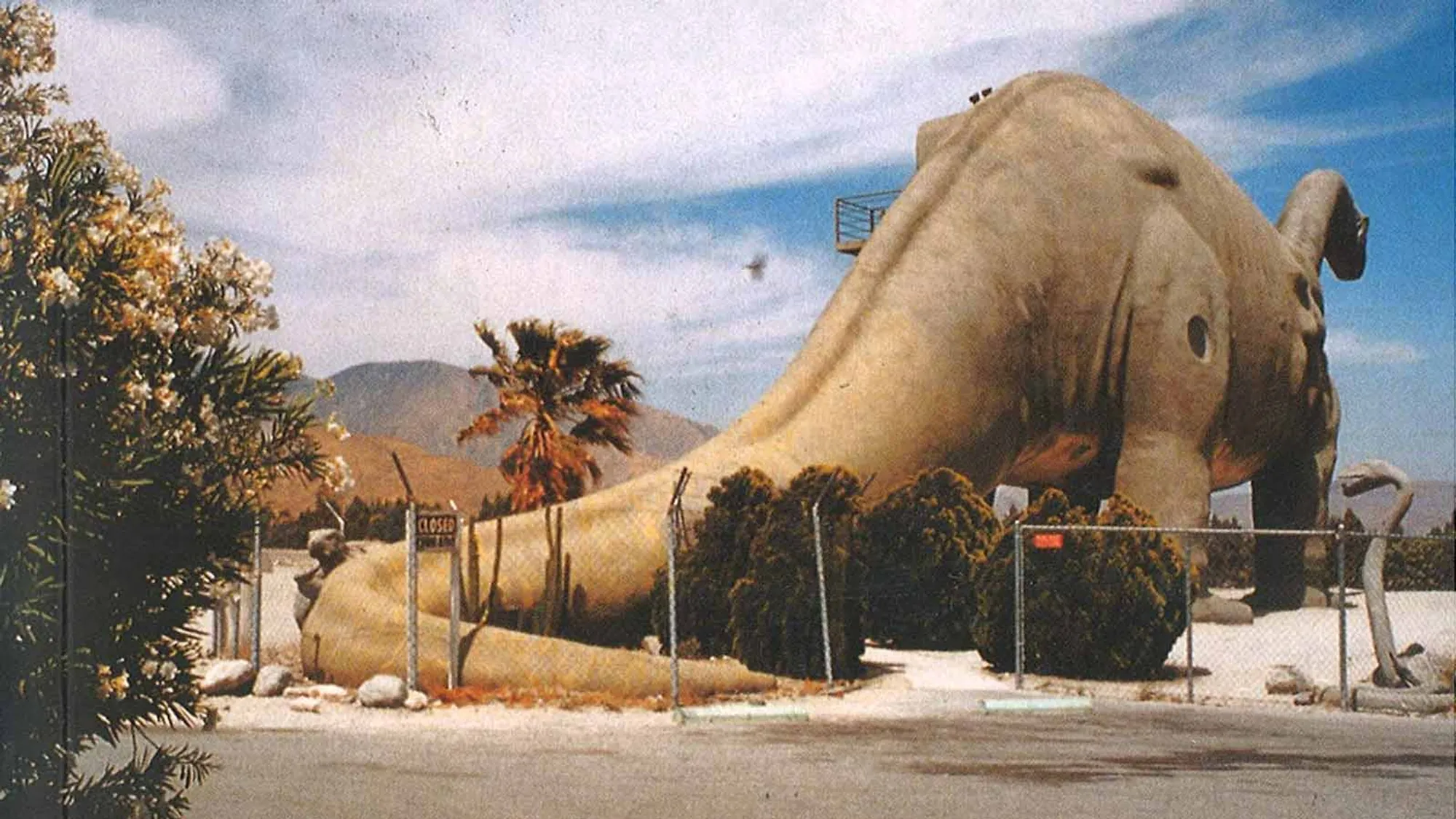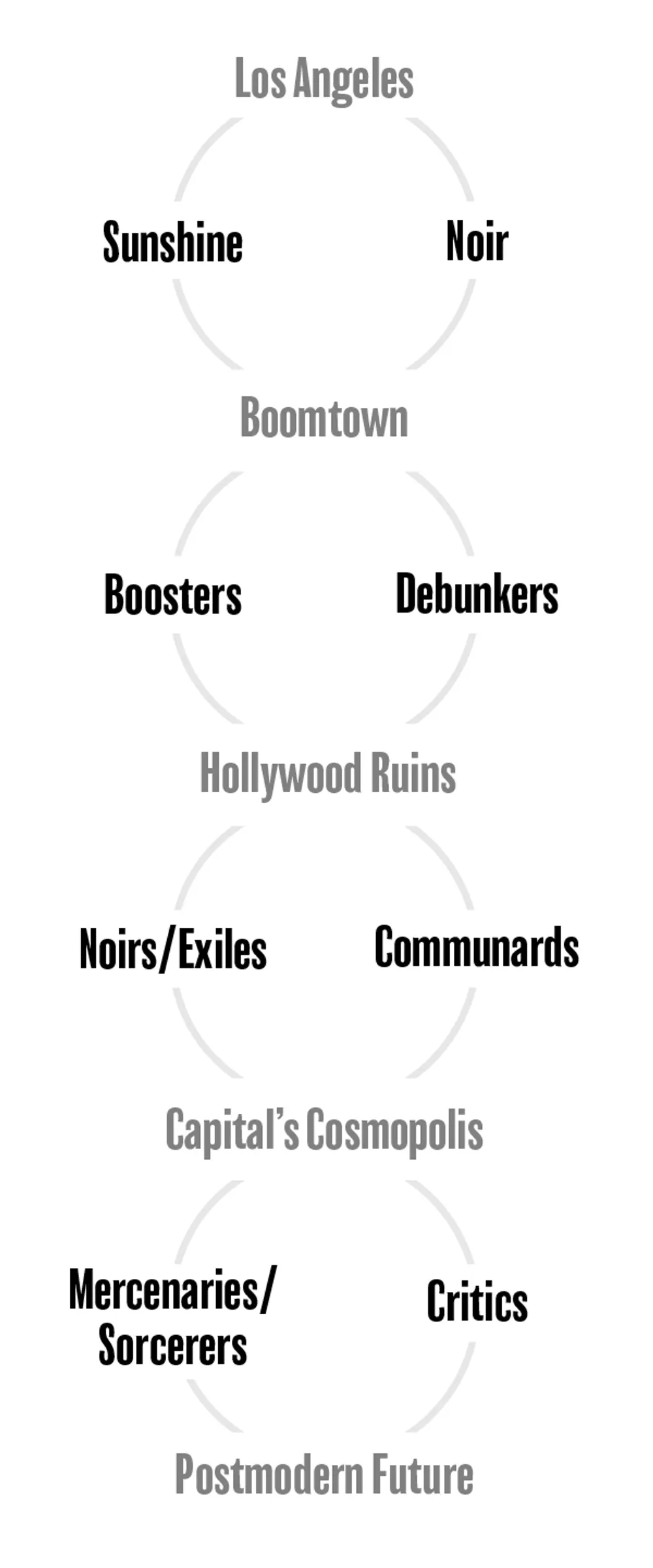Los Angeles Intellectuals

As a guide to understanding the cultural mythology and socio-geographical history of the singular American city that represents both “the utopia and dystopia for advanced capitalism,” there is none more incisive than Mike Davis’ City of Quartz, a tour de force which offers perhaps the definitive account of the land “south of the Tehachapis” even 30 years after its first printing.
Davis offers what is effectively a materialist history of Los Angeles—highlighting the throughline of white, capitalist power and oppression in the region’s evolution, especially in relation to its geography. But materialism notwithstanding, he begins by surveying the intellectuals who effectively created the myths by which the region came to understand itself and by which the region itself was shaped in material fact.
To begin a discussion of Los Angeles by invoking its intellectuals is, as Davis recognizes, to “invite immediate incredulity, if not mirth.” In contrast to the formidable intellectual heritage present in American cities like New York or San Francisco, Los Angeles is traditionally viewed as a “sun-baked plain” of “peculiarly infertile soil, unable to produce, to this day, any homegrown intelligentsia.” The creative and intellectual forces that Los Angeles has attracted have almost always gone to its boundless Culture Industry; it is Los Angeles where “almost everyone is either on a corporate payroll or waiting hopefully at the studio gate” (a truth satirized to perfection in Joel and Ethan Coen’s Barton Fink). Such a bastardization of the mind by its tainted pact with capitalist powers has led to the image of Los Angeles as destroyer of intellectual rigor:
To move to Lotusland is to sever connection with national reality, to lose historical and experiential footing, to surrender critical distance, and to submerge oneself in spectacle and fraud. Fused into a single montage image are Fitzgerald reduced to a drunken hack, West rushing to his own apocalypse (thinking it a dinner party), Faulkner rewriting second-rate scripts, Brecht raging against the mutilation of his work, the Hollywood Ten on their way to prison, Didion on the verge of a nervous breakdown, and so on.
But lurking beneath the sunny veneer of culture-capitalism exists a lineage of critical work that, Davis argues, emerged as L.A.’s distinctive intellectual contribution: the literary and film genre of noir. Through its combination of “‘tough-guy’ realism, Weimar expressionism, and existentialized Marxism,” noir represents the nexus of L.A. (and capitalism itself) as a double-faced city—utopia and dystopia, heaven and hell.
Thus, to open this book on the social and material history of Los Angeles, Davis uses the “master dialectic” of sunshine and noir to explore successive generations of intellectuals who shaped the regional ideologies that persist to this day. On one hand of this typology are the mythologizers themselves, those who sought to construct or deconstruct a particular image of the city.

In this camp Davis places the following types, along with their chief representatives: “the Boosters,” the original fabricators of the (white) Southern California dream (Charles Fletcher Lummis); “the Noirs” and “the Exiles,” writers, artists, filmmakers, and European expatriates whose work showed how that dream had become nightmare (James M. Cain, Raymond Chandler, James Ellroy, numerous Weimar exiles from Brecht to Adorno and Horkheimer); and “the Mercenaries” and “the Sorcerers,” a relatively recent influx of architects, designers, theorists, and scientists allied to the interests of wealthy institutions and billionaire patrons (Reyner Banham, Frank Gehry, Robert A. Millikan, L. Ron Hubbard).
At the other pole of the sunshine and noir dialectic are the anti-mythologizers, those contemporaneous with each wave of the mythologizers who see Los Angeles as a real city stratified by class and material interests. With these groups, Davis charts attempts at establishing “authentic epistemologies for Los Angeles” that cut through the mirages of the mythologizers.
In this camp are “the Debunkers,” anti-romantic writers who focused on the role of class violence in the early cultural landscape of L.A. (Louis Adamic, Carey McWilliams); “the Communards,” avant-garde artists and writers who explored difference and anti-universality as foundational concepts in their portraits of daily life in fringe communities (Ornette Coleman, Kenneth Anger, Thomas Pynchon); and thirdly, an unnamed group (contemporary to the 1990 publication of the book) of various figures, including UCLA professors and Compton rappers, wrestling with the corporate-cultural apparatus of “postmodern Los Angeles” (the “L.A. School”, NWA).
This account of L.A.’s shifting intellectual history captures something of the city’s essential duality, a feature apparent to those who look a little deeper than the veneer proffered by Hollywood and Instagram influencers. (And only a little: Skid Row, the blighted capital of Los Angeles homelessness, impudently sits a mere two blocks from the “revitalizing” center of Downtown Los Angeles and its wealthy “work-play” residents.) But the allure of dreams and nostalgia that is the City of Angels is overbearing, and the small few, like Davis and his subjects, who wish to engage in sober critique of L.A.’s “daytime problems” in a manner that goes beyond the stereotypical bashing, appear as infrequent figures desperately trying to gain substance in a world of mirages.
The Los Angeles intellectual is faced with dire obstacles. The lack of a civic culture and history, the lack of shared contexts (what does the Jewish Westside have to do with Salvadoran Westlake?), the lack of even a central geographical hub in this massive non-city dominated by the car makes it nearly impossible for a sustained, critical scene to take root. Were it to succeed, the further danger of any critical thought being enveloped into the Culture Industry persists. But the connections Davis makes are valuable, and they establish a clearly trod path and way forward for future attempts at “authentic epistemologies for Los Angeles.”
For one, it is evident that these epistemologies, if they are to rise above the smog of L.A.’s pseudo-philosophies and resist the nullifications of celebrity, must confront the all-encompassing power of capital and white supremacy, and their expression in the spatial/social oppression that is visible everywhere in Southern California.
Thus Davis, in the epilogue to chapter one, sees the path forward as occupying the middle ground between a Gramscian optimism (a coalition of “counter-hegemonic” cultures) and the pessimism of Blade Runner’s apocalyptic critique of capitalism. This hybrid thought can acquire “social force (only) if it is embodied in an alternative experiential vision—in this case, of the huge Los Angeles Third World…polyethnic and poly-lingual.” In 2019, it seems too early to say whether such alternative thought has successfully taken hold, but the need for it is as strong as ever.